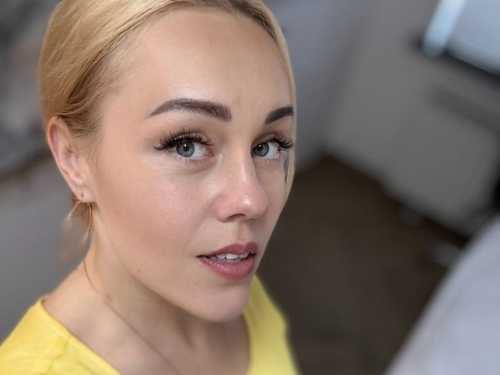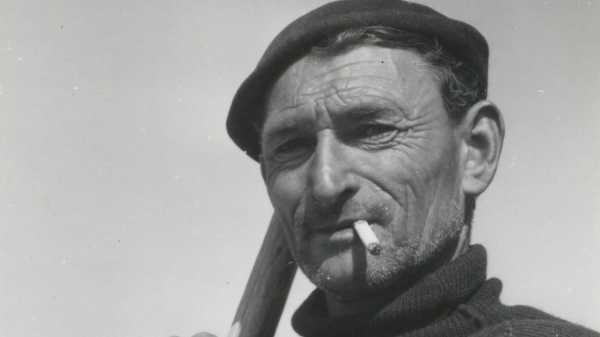
Save this storySave this storySave this storySave this story
The French New Wave was launched largely by exceptional first features from 1959 and 1960, such as François Truffaut’s “The 400 Blows,” Alain Resnais’s “Hiroshima, Mon Amour,” and Jean-Luc Godard’s “Breathless.” But Agnès Varda, who won international acclaim in 1962, for “Cléo from 5 to 7,” actually beat her male peers to the punch with her own first feature: the astonishing, ultra-low-budget independent film “La Pointe Courte,” which she shot in 1954, at the age of twenty-six. It should have launched a cinematic revolution, but neither the public nor her peers were yet ready to follow her lead. This extraordinary film (which is streaming on the Criterion Channel) is among the few that are truly ahead of their time—and that might help to explain its undue obscurity. The genesis of “La Pointe Courte” is as noteworthy as the film itself, and the story of its creation is on fascinating display in “La Pointe Courte, from Photographs to Film,” an exhibition of Varda’s photographs from the late nineteen-forties and early fifties, currently on display at the Rencontres d’Arles, an international photography festival.
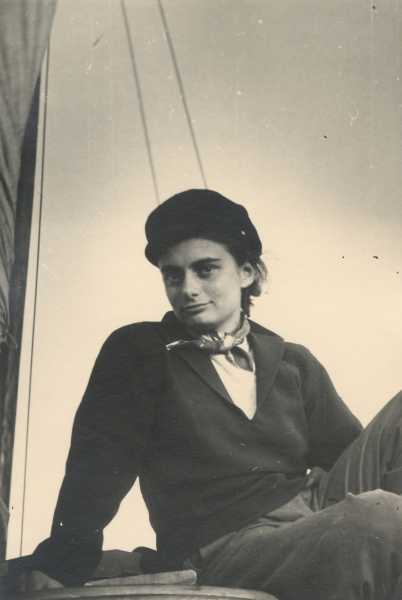
Agnès Varda on the sailboat Quand Même, photographer unknown, September, 1948.
Estate of Agnès Varda / Rosalie Varda Collection
The film is titled for its setting, a fishing village at the end of a peninsula on a saltwater lagoon in Sète, a port city in the South of France. Varda, who was born in Belgium in 1928, went to Sète with her family, as refugees, during the Second World War. She made the movie there in the summer of 1954, and most of the photos in the exhibition play like studies for the movie, especially for half of it. Inspired by William Faulkner’s novel “The Wild Palms,” which intercuts two parallel narratives, Varda made a movie that similarly juxtaposes two dramas—two love stories—which are subtly and deftly connected. One is a tale of the romantic crisis of a young intellectual couple visiting from Paris; they are called, in the script, only “He” (a native of Sète, who left twelve years ago) and “She” (a lifelong Parisian), and are played, respectively, by Philippe Noiret and Silvia Monfort. The other is a documentary-like re-creation of the life of the village, featuring local residents, dramatizing the highly organized and politicized essence, the economic hardships, and the artisanal aesthetic of small-scale commercial fishing, along with a love story involving two young villagers.
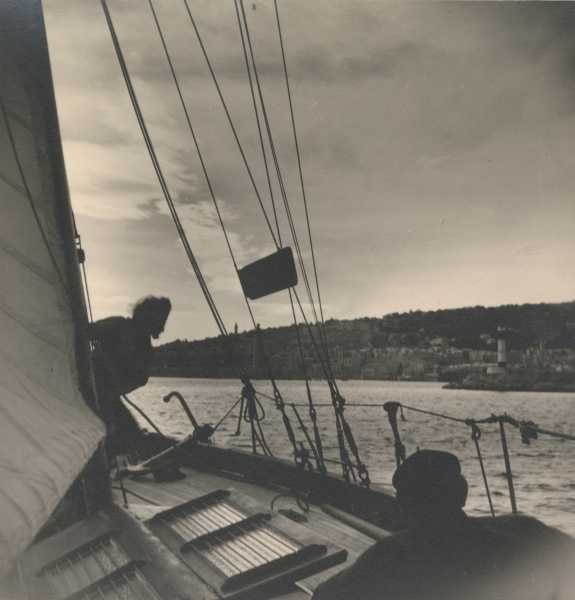
Valentine Schlegel and Mr. Mestres on the deck of a sailboat, circa 1949.
Estate of Agnès Varda / Agnès Varda Photographic Archives / Institut pour la Photographie des Hauts-de-France
The latter, virtually ethnographic drama of village life is the one for which Varda’s photos in the Arles exhibit serve as storyboard-like sketches. In the photos, as in the film, Varda crams the frame with the organic stuff of daily life in the fishing community. It’s a place of water and wood, crude logs and finely turned boat ribs and the diverse grain of wood at stages in between; of tumbledown shacks and rugged little houses, fishermen’s nets and the fish and shellfish they catch (even unto the decorative arrangement of desiccated seahorses tacked to a door in the form of a cross), and the sea, the sand, and the sky. The photos, like the film, offer dramatic contrasts in texture and natural substances that are crowded together from foreground to background, with eye-grabbing depth of field; Varda deploys this technique to both aesthetic and emotional effect, emphasizing the abstract forms of practical landscapes and reflecting the complex energy of lives lived close together and close to nature.
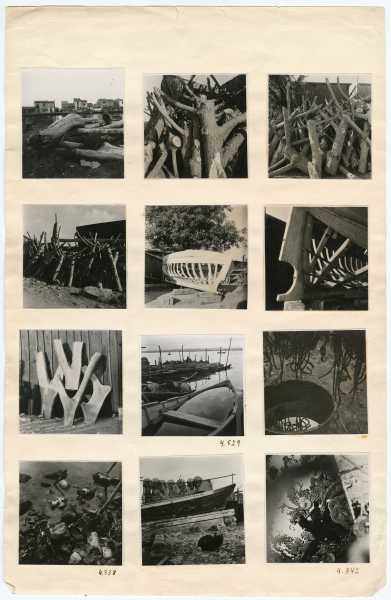
Photographs of La Pointe Courte, contact sheet used as reference in the making of the film, 1954.
Ciné-Tamaris
The photos also offer vivid portraits of residents of the village (including some who appear in the film) and a documentary illustration of the joust, the grand public spectacle that takes place on Sundays. With pageantry complete with uniforms, officials, and teeming audiences, fishermen bearing long poles take positions on the sterns of boats that pass in an inlet, competing to knock their opponents into the water, roughly but harmlessly. The joust and its surrounding festivities provide the locals’ story with its dramatic climax; Varda films this at length and in detail to display both the secular celebration of the playful formalities and rituals and the class-based order that its organization perpetuates.
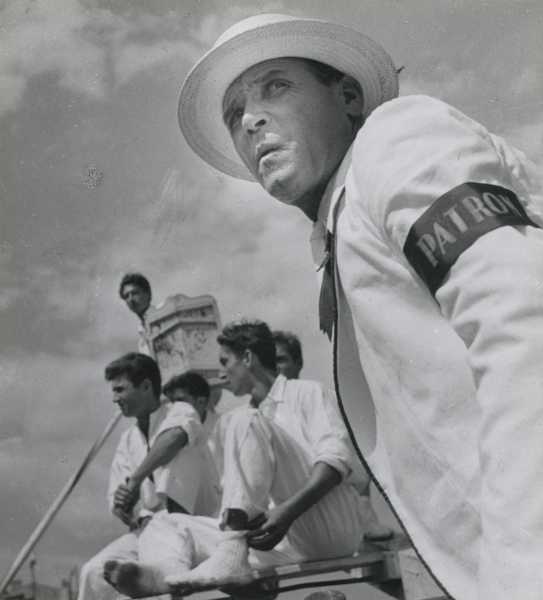
Water jousters in Sète, circa 1952.Estate of Agnès Varda / Rosalie Varda Collection
There and throughout La Pointe Courte, both in her photos and in the movie, Varda, showing fishermen and the women of the area at work and at rest, creates a startlingly original sort of incidental portraiture. These are pictures of people in the course of life, firm in their place; they have plenty of heart but no soul, not in any negative sense but in the positive sense of the fullness of their worldly existences—they have no need for any metaphysical supplement to complete them. Thus Varda avoids sentimentalizing manual workers with any faux-religious exaltation. In this regard, her photographic materialism, in stills and cinema, connects to the literary modernism of its day—to the philosophical materialism of Sartre and the rising nouveau roman of Marguerite Duras and Alain Robbe-Grillet.
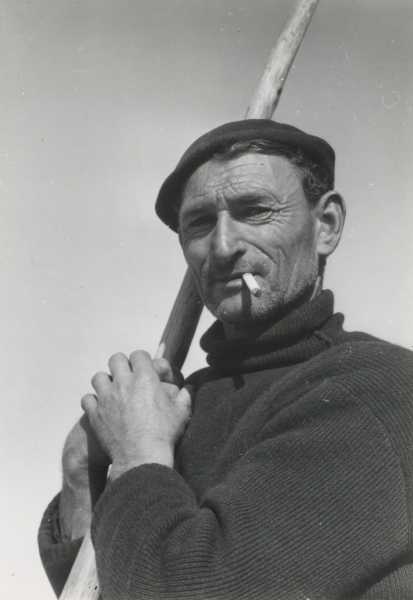
Fisherman at La Pointe Courte, original silver print, March, 1954.
Estate of Agnès Varda / Rosalie Varda Collection
Yet it’s in the differences between the photos and the movie by which Varda proves her extraordinary originality as a filmmaker. That originality finds its roots in the audacity of her cinematic practice, going back to her very idea to make the film. Varda knew about photography, having taken a night course in Paris. After working locally as a photographer, she was launched precociously into France’s artistic beau monde when, through a personal connection, the impresario and director Jean Vilar invited her to photograph his theatre festival in Avignon and his theatre company in Paris. (She also documented art works by her friend Alexander Calder.) But when Varda undertook the film—by way of a small inheritance and the backing of friends, for a minuscule budget of about fourteen thousand dollars—she not only had no experience or training in filmmaking but, by her own admission, virtually no knowledge of the art of movies, of classic movies, or of great contemporary films and filmmakers. In a 1993 interview, she said, “I was worse than ‘non-cinephile,’ I was ignorant.”
She didn’t frequent the Cinémathèque Française, where her contemporaries of the eventual New Wave were studying the classics—she’d never even heard of it. While Godard, Truffaut, and company habitually watched three films a day, wrote criticism, and made short films as part of their self-imposed training, Varda dove right into a feature film, and admitted that she might never have dared to do so had she known the classics of cinema at the time. (In the 1993 interview, she cited, as her influences, “paintings, books, and life,” and, in 2008, she added modern music to that list.) Although Varda had never even seen a movie camera up close before the first day of the shoot, there’s nothing apprentice-like about the results: it’s not a student film or a merely promising effort but, rather, an anticipatory masterwork. From the very start of “La Pointe Courte,” Varda displayed the liberating audacity of her lack of technical knowledge by also displaying her self-awareness of the fundamental difference between photography and cinema—not merely the obvious factor of time but the mechanical one of movement.
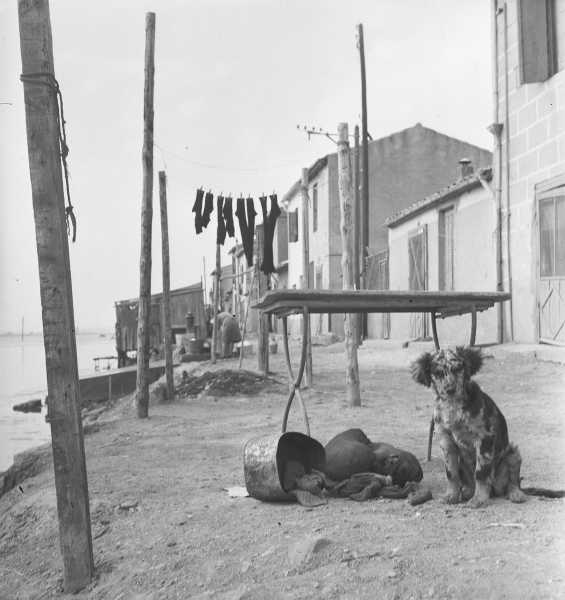
Dog on a dock at La Pointe Courte, March through April, 1953.Estate of Agnès Varda / Agnès Varda Photographic Archives / Institut pour la Photographie des Hauts-de-France
The first sequence of “La Pointe Courte,” introducing its streets, its homes, and its people, features a roving, probing, trawling, penetrating camera that moves both freely and deliberately. Varda presents complicated changes of focus and light that an experienced director would likely have considered impossible, at least with a minimal budget and crew, and which she was able to achieve, seemingly naturally, not as a display of virtuosity but merely as a revelation of the essence of place—and of the cinema itself.
Whereas the portraiture of Varda’s photos from the village emphasizes how the residents are inextricable from the locale and its physical details, her script dramatizes their lives by anchoring them all the more widely in the region’s politics and culture—even in the abstractions of bureaucratic power. The story is launched by the presence of a mysterious stranger, who arouses suspicions and, indeed, turns out to be an inspector, one of several, enforcing regulations of health and commerce; they play large roles in the film and in the lives of the villagers. The fishermen and their families organize like the French Resistance to convey alerts of inspections, which come with heavy penalties for breach of protocol regarding where to fish and how to handle the catch. (One subplot involves a five-day jail term.)

Reflection on the quays of Sète, original silver print, 1950.
Estate of Agnès Varda / Rosalie Varda Collection
The cat-and-mouse game of law and evasion, alongside the elaborate ruses that the villagers deploy in order to make a living, is the prime dramatic through line of the film. These abstractions of power play a concrete and practical role in the villagers’ daily lives, and they also form a key part of the local youths’ romance, when the twenty-year-old fisherman Raphaël, a target of the inspectors, and the sixteen-year-old Anna contend with her father’s refusal to allow her to go out with him. (There, Varda contrasts patriarchal dogmatism, and its alliance even with a much resented law, with the hard-won empathetic wisdom of the village’s women.)
The movie’s other tale that’s loosely linked to the life of the village, the romantic crisis between Him and Her, the unnamed couple who’ve come from Paris, brings yet another realm of abstract forces—and another, more abstract aesthetic—to the film. As a rule of thumb, a love story by a twenty-six-year-old artist is probably personal (we’ll await the publication this fall of a biography of Varda by Laure Adler to get the full story); in any case, the premise of this romantic plot hints at Varda’s reclamation of her own roots. The man called He has been away from his native Pointe Courte for a dozen years; He and She, a native Parisian, have been married for four years, but She has never seen where He comes from. She declares her desire to end the marriage; He hopes that a visit to his home town will save the relationship. What they do in Paris is as vague as their identities; they speak in the psychological dialectic of intellectuals and artists. The actors Monfort and Noiret, who were members of Vilar’s theatre company in Paris, deliver their dialogue with theatrically controlled, neutral intonations that, rather than emphasizing emotional expression, allow the ideas that they discuss—regarding the nature of love, the conflicts inherent in marriage, the connections and blind spots built into relationships, and, above all, the role of one’s background in one’s present-day identity—to bear the weight of the couple’s emotional lives. Moreover, Varda crafts a similarly distinctive visual world for the pair; she films them differently from the villagers, putting them in nearly choreographed action and sculptural poses, using archly constructed framings, high angles, calculated symmetries, and effects of light (reflections and shadows) to amplify the abstract nature of their relationship, even amid the raw physicality of His home town, which he displays to Her as essential to who he is, albeit in the pure forms of its aesthetic.
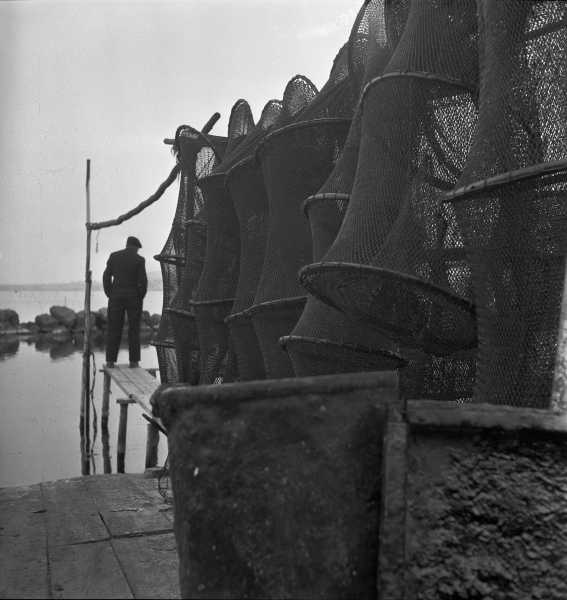
Fishing lines at La Pointe Courte, March through April, 1953.Estate of Agnès Varda / Agnès Varda Photographic Archives / Institut pour la Photographie des Hauts-de-France
These images of the couple reach far beyond anything in Varda’s still photos of La Pointe Courte and attain the high modernism of the cinema. The editor of Varda’s film was Resnais, who was already an accomplished director of short films; as they worked (in a home studio on the Rue Daguerre, where she already lived and would live and work for the rest of her life), he’d refer to such filmmakers as Michelangelo Antonioni and Carl Theodor Dreyer, but she’d never heard of them. No matter: Varda’s film shares crucial aspects of their inspiration, in addition to that of other advanced filmmakers of the time, such as Ingmar Bergman. With the cinema, Varda tells the story of Sète and the story of being from Sète in a mode that’s as personal in its substance as in its artistry.

Customs in Sète, circa 1953.Estate of Agnès Varda / Rosalie Varda Collection
As intimate as “La Pointe Courte” is, however, there’s a crucial part of Varda’s character that’s missing from it—exuberance, playfulness, gregariousness. The film, despite its presentation at the Cannes Film Festival and acclaim in Le Monde, didn’t receive commercial distribution. Varda then turned her attention to short films, in which she gave free rein to those aspects of her personality and expanded her artistry to fit. Then, with her second feature, “Cléo from 5 to 7,” from 1962, she worked even more personally and even more freely—hallmarks of the New Wave, which she, having run out ahead of, then rejoined, already in progress.
Sourse: newyorker.com


